Inteligencia Artificial en campañas de mercadeo. Una revisión sistemática de literatura
Resumen
El presente documento pretende aunar información alrededor de las temáticas de la Inteligencia Artificial y su uso en las Campañas de Mercadeo para el proceso de toma de decisiones de las empresas en la actualidad. Para su construcción se realizó una revisión sistemática de literatura, en la cual se tomó como fuente principal de búsqueda la base de datos Scopus. Como pregunta principal se trabajó ¿Cómo afecta el uso de la inteligencia artificial las campañas de mercadeo de las empresas? Se aplicó el protocolo PRISMA para la elegibilidad de los documentos, siguiendo los criterios establecidos por Petticrew y Roberts adaptados para las ciencias sociales. Como resultado principal se obtiene que el uso de la IA en las campañas de mercadeo puede impactar positivamente a las empresas, mejorando la eficiencia, personalizando las campañas acordes a los gustos de los clientes, y, además, puede utilizar una cantidad significativa de información obtenida para distintos procesos en las empresas, siempre y cuando se haga un buen uso y tratamiento de los datos obtenidos. Como conclusión principal se obtuvo que la Inteligencia Artificial impacta significativamente la forma en que las empresas implementan o realizan las campañas de mercadeo, mejorando sus resultados.
Descargas
Citas
Al Adwan, A., Kokash, H., Al Adwan, R. y Khattak, A. (2023). Data analytics in digital marketing for tracking the effectiveness of campaigns and inform strategy. Growing Science, 7(2), 563-574. Doi: 10.5267/j.ijdns.2023.3.015.
Algarni, M. y Ismail, M.M.B. (2023). Applications of Artificial Intelligence for Information Diffusion Prediction: Regression-based Key Features Models. Science and Information Organization, 14(10), 1191-1201. Doi: 10.14569/IJACSA.2023.01410123.
Al Khaldy, M.A., Al-Obaydi, B.A.A. y al Shari, A.J. (2023). The Impact of Predictive Analytics and AI on Digital Marketing Strategy and ROI. Springer Science and Business Media Deutschland GmbH, 136, 367-379. Doi: 10.1007/978-3-031-42455-7_31.
Almasri, Y. (2023). Fashion Virtual Influencers: Antecedents Influencing Females' Behavioral Intentions in Jordan. University of Jordan,Deanship of Scientific Research, 50(3), 390-402. Doi: 10.35516/hum.v50i3.5420.
Al-Rifaie, M. M. y Alhakbani, H.A. (2016). Handling class imbalance in direct marketing dataset using a hybrid data and algorithmic level solutions. Institute of Electrical and Electronics Engineers Inc., 446-451. Doi: 10.1109/SAI.2016.7556019.
Al-Shayea, Q.K. (2013). Evaluating marketing campaigns of banking using neural networks. 2, 759-761.
Anjali Daisy, S. (2020). Stimulus of chatbot with customer relationship pipeline. Institute of Advanced Scientific Research, Inc., 12(5), 885-889. Doi: 10.5373/JARDCS/V12SP5/20201831.
Armas. M. C. (2021). La Inteligencia Artificial en empresas peruanas e impactos laborales en los trabajadores. Iberoamerican Business Journal, 5 (1), 83 – 105. DOI: http://dx.doi.org/10.22451/5817.ibj2021.
Bello, M.J.G. (2019). Cloud-based conversational agents for user acquisition and engagement. SciTePress, 528 - 534. Doi: 10.5220/0007766105280534.
Bonnin. G. y Alfonso. M.R. (2019). The narrative strategies of B2B technology brands. Emerald Group Holdings Ltd., 34 (7), 1448 - 1458. Doi: 10.1108/JBIM-03-2019-0112.
Calderón. H. G. y Castaño. D. G. (2005). Investigación en Administración en América Latina: Evolución y Resultados. UNAD, sede Manizales.
Cambria. E., Gastaldo. P., Bisio. F. y Zunino. R. (2015). An ELM-based model for affective analogical reasoning. Elsevier B.V. 149, 443-455. Doi: 10.1016/j.neucom.2014.01.064
Cambria, E. y Melfi G. (2015). Semantic outlier detection for affective common-sense reasoning and concept-level sentiment análisis. AAAI Press. 276-281.
Casado Díaz, A. B. y Sellers Rubio, R (2013). Introducción al Marketing. Editorial Club Universitario – ECU.
Ceballos-Parra, P.J.; W. A. Sarache y D.M. Gómez, Un Análisis Bibliométrico de las Tendencias en Logística Humanitaria, doi: 10.4067/S0718-07642018000100091, Información Tecnológica, 29(1), 91-104 (2018).
Chan. C.C.H., Hwang. Y. R. y Wu H. C. (2016). Marketing segmentation using the particle swarm optimization algorithm: a case study. Springer Verlag, 7(6), 855-863. 10.1007/s12652-016-0389-9.
Chica, M., Cordón, Ó., Damas, S., Iglesias, V. y Mingot, J. (2016). Identimod: Modeling and managing brand value using soft computing. Elsevier B.V., 89, 41-55. Doi: 10.1016/j.dss.2016.06.007.
Dekkers, O. M., Vandenbroucke, J. P., Cevallos, M., Renehan, A. G., Altman, D. G., & Egger, M. (2019). COSMOS-E: guidance on conducting systematic reviews and meta-analyses of observational studies of etiology. PLoS medicine, 16(2), e1002742.
Diapouli, M., Kapetanakis, S., Petridis, M. y Evans, R. (2017). Behavioural analytics using process mining in on-line advertising. CEUR-WS, 2028, 147-156.
Ducange. P., Fazzolari. M., Petrocchi. M. y Vecchio M. (2019). An effective Decision Support System for social media listening based on cross-source sentiment analysis models. Elsevier Ltd, 78, 71-85. Doi: 10.1016/j.engappai.2018.10.014.
Dutta, A., Deb, T. y Pathak S. (2021). Automated Data Harmonization (ADH) using Artificial Intelligence (AI). Springer, 58(2), 257-275. Doi: 10.1007/s12597-020-00467-4.
Espitia. F. y Moya. E. (2008). Mercadeo y logística como estrategia de competitividad empresarial, Revista Inventum, 4 (Facultad de Ingeniería UNIMINUTO), 9-11.
Gast, I.; K. Schildkamp y J.T. van der Veen, Team-Based Professional Development Interventions in Higher Education: A Systematic Review, doi: /10.3102/0034654317704306, Review of Educational Research, 87(4), 736–767 (2017).
Geng, T., Lin, X. y Nair, H.S. (2020). Online evaluation of audiences for targeted advertising via bandit experiments. AAAI press, 13273-13279.
Ghatasheh. N., Faris. H., AlTaharwa. I., Harb. Y. y Harb A. (2020). Business analytics in telemarketing: Cost-sensitive analysis of bank campaigns using artificial neural networks. MDPI AG, 10 (7). Doi: 10.3390/app10072581.
Gołąb-Andrzejak. E. (2023). The Impact of Generative AI and ChatGPT on Creating Digital Advertising Campaigns. Taylor and Francis Ltd. 10.1080/01969722.2023.2296253.
Golab-Andrzejak, E. (2023). Measuring the effectiveness of digital communication - social media performance: an example of the role played by AI-assisted tools at a university. Elsevier B.V., 225, 3332-3341. Doi: 10.1016/j.procs.2023.10.327.
Hennessy, C. y Smeaton, A.F. (2016). Profiling, assessing and matching personalities active in social media. CEUR-WS, 1751, 307-319.
Martínez Hernández , R. (2023). Blended Learning en el aprendizaje de idiomas: Una revisión de la literatura académica. Estudios Y Perspectivas Revista Científica Y Académica , 3(2), 113–138. https://doi.org/10.61384/r.c.a.v3i2.36
Rubio Rodríguez, A. D., & Leon Reyes, B. B. (2024). Actividades Deportivas para Mejorar el Aprendizaje en la Materia de Física . Revista Científica De Salud Y Desarrollo Humano, 5(2), 398–409. https://doi.org/10.61368/r.s.d.h.v5i2.139
Icaza Cárdenas, C. K., Riquero Pincay, C. J., & Márquez Villegas, V. T. (2023). Comunicación estratégica para el sector turístico sustentable. Emergentes - Revista Científica, 3(2), 70–87. https://doi.org/10.60112/erc.v3i2.34
Ruiz Díaz Benítez, J. R. (2023). Diseño de una Arquitectura de Referencia en la Logística de Abastecimiento Inteligente de Almacenes mediante el uso de Tecnologías de la Industria 4.0. Caso Almacenes retail de la Ciudad de Pilar. Revista Veritas De Difusão Científica, 4(2), 55–70. https://doi.org/10.61616/rvdc.v4i2.46
Martínez, O., Aranda , R., Barreto , E., Fanego , J., Fernández , A., López , J., Medina , J., Meza , M., Muñoz , D., & Urbieta , J. (2024). Los tipos de discriminación laboral en las ciudades de Capiatá y San Lorenzo. Arandu UTIC, 11(1), 77–95. Recuperado a partir de https://www.uticvirtual.edu.py/revista.ojs/index.php/revistas/article/view/179
v, H., & Quispe Coca, R. A. (2024). Tecno Bio Gas. Horizonte Académico, 4(4), 17–23. Recuperado a partir de https://horizonteacademico.org/index.php/horizonte/article/view/14
Da Silva Santos , F., & López Vargas , R. (2020). Efecto del Estrés en la Función Inmune en Pacientes con Enfermedades Autoinmunes: una Revisión de Estudios Latinoamericanos. Revista Científica De Salud Y Desarrollo Humano, 1(1), 46–59. https://doi.org/10.61368/r.s.d.h.v1i1.9
Kar, A.K. y Singh, P. (2012). A model for bundling mobile value added services using neural networks. Inderscience Publishers, 5(1), 47-63. Doi: 10.1504/IJADS.2012.044946.
Kermanidis, K., Maragoudakis, M., Vosinakis, S. y Exadaktylos, N. (2013). Designing a support tool for creative advertising by mining collaboratively tagged ad video content: The architecture of PromONTotion. Springer New York LLC, 412, 10-19. Doi: 10.1007/978-3-642-41142-7_2.
Kotler, P. & Keller, K. L. (2016). Marketing management 15th ed.(15th). Harlow: Pearson.
Kotler. P. (2000). Marketing Management, Millenium Edition. Pearson Custom Publishing.
Vega Alvarez, E., & Huang Chang, Y. (2024). Blended Learning, and Its Impact on English Speaking Skills in Pronunciation in Group 11-4 of Liceo de Santo Domingo, I Quarter 2024. Ciencia Y Reflexión, 3(2), 159–173. https://doi.org/10.70747/cr.v3i2.18
Chavarría Hidalgo, C. (2024). Calculation of productive capacity: From theory to practice. Ciencia Y Reflexión, 3(2), 194–214. https://doi.org/10.70747/cr.v3i2.20
Agrela Rodrigues, F. de A., Moreira da Silveira, F., Moreira de Lima, M. R., & Pinto Uchôa , K. S. (2024). Identificando a Inteligência em Crianças: Traços Físicos e Comportamentais. Ciencia Y Reflexión, 3(2), 21–51. https://doi.org/10.70747/cr.v3i2.5
Guzmán Campoverde, G. A., García Reinoso, L. L., & Espinoza Pesantez , D. I. (2025). Dímero D en pacientes con SARS-CoV-2 en un Hospital Privado de Cuenca, Ecuador (2020 y 2021). Ciencia Y Reflexión, 4(1), 1959–1973. https://doi.org/10.70747/cr.v4i1.227
Pineda Herrera, Y. de J., & Troya Sanchez, M. E. (2025). Using Art as a Pedagogical Tool for Improving English Vocabulary Learning among 5th Graders. Ciencia Y Reflexión, 4(1), 852–875. https://doi.org/10.70747/cr.v4i1.44
Acosta Varela, N., & Vera Bustillos, E. (2025). Donación de Plasma Trasfronteriza en Estudiantes Universitarios: Un Análisis Socioeconómico. Ciencia Y Reflexión, 4(1), 1787–1812. https://doi.org/10.70747/cr.v4i1.99
Kotler, P., Kartajaya, H. y Setiawan, I. (2021). Marketing 5.0. Almuzara S.L.
Lasse Rouhiainen. (2018). Inteligencia artificial. Editorial Planeta, S.A.
Liu Y., Alzahrani I.R., Jaleel R.A. y Sulaie S.A. (2023). An efficient smart data mining framework based cloud internet of things for developing artificial intelligence of marketing information análisis. Elsevier Ltd, 60(1. Doi: 10.1016/j.ipm.2022.103121.
Li, S., Li, X.L., Tung, W.L. y Sim, K. (2016). Behaviors and profit based sales campaign design. IEEE Computer Society, 2016(January), 353-360. Doi: 10.1109/ICTAI.2015.61.
Loukili, M., Messaoudi, F. y El Ghazi, M. (2023). Sentiment Analysis of Product Reviews for E-Commerce Recommendation based on Machine Learning. Al-Zaytoonah University of Jordan, 15(1), 1-13. Doi: 10.15849/IJASCA.230320.01.
Martínez, R.G., Carrasco, R.A., García-Madariaga, J., Gallego, C.P. y Herrera-Viedma, E. (2019). A comparison between Fuzzy Linguistic RFM Model and traditional RFM model applied to Campaign Management. Case study of retail business. Elsevier B.V., 162, 281-289. Doi: 10.1016/j.procs.2019.11.286.
Marmol, M., Goyal, A., Copado-Mendez, P.J., Panadero, J. y Juan, A.A. (2021). Maximizing customers' lifetime value using limited marketing resources. Emerald Group Holdings Ltd., 38(8), 1058-1072. 10.1108/MIP-02-2021-0050.
Méndez S. A., Navarrete T. M. y García M. A. (2020). Transición de lo tradicional a lo digital: Apertura al marketing 5.0. Vinculatégica Efan. 250 – 258.
Micu. A., Capatina. A., Cristea. D., Munteanu. D., Micu. A. y Sarpe. D. (2022). Assessing an on-site customer profiling and hyper-personalization system prototype based on a deep learning approach. 174 (121289). 10.1016/j.techfore.2021.121289.
Minton, E.A., Kaplan, B. y Cabano, F.G. (2022). The influence of religiosity on consumers' evaluations of brands using artificial intelligence. John Wiley and Sons Inc, 39(11), 2055-2071. Doi: 10.1002/mar.21727.
Miralles-Pechuán. L., Ponce. H. y Martínez-Villaseñor. L. (2018). A novel methodology for optimizing display advertising campaigns using genetic algorithms. Elsevier B.V., 27, 39-51. Doi: 10.1016/j.elerap.2017.11.004.
Morales, L. D. y Zaldumbide, P. D. (2023). Marketing 5.0 como eje de posicionamiento en las empresas del Ecuador. 593 Digital Publisher CEIT, 8(3-1), 363-376. https://doi.org/10.33386/593dp.2023.3-1.1868.
Moreno, R., Viajes, M., Fernandez, A., De Diego, I.M., Moguerza, J.M., Lancho, C. y Cuesta M. (2022). Automatic detection of potential customers by opinion mining and intelligent agents. Institute of Electrical and Electronics Engineers Inc., 93-101. Doi: 10.15439/2022F131.
Murillo, A. A. y Vizuete, M. J. (2023). El impacto de la IA en el marketing de contenidos dentro del contexto del marketing 5.0. SIGMA 11(01), 63-81. https://doi.org/10.24133/yz85g716.
Nesterenko V.; Miskiewicz R.; Abazov R (2023). Marketing Communications In The Era Of Digital Transformation. Institute for International Cooperation Development, Vol (6), 57-70. https://www.scopus.com/inward/record.uri?eid=2-s2.0-85166318279&doi=10.34021%2fVE.2023.06.01%284%29&partnerID=40&md5=d5897114101198da9e51464305990ec6. 10.34021/VE.2023.06.01(4)
Núñez. C. E. y Miranda. C. J. (2020). El marketing digital como un elemento de apoyo estratégico a las organizaciones. Cuadernos Latinoamericanos de Administración, vol. 16, (30), 1-14.
Pérez, G. A, Villegas, E. C, Cabascango, J. J y Soria, F. E. (2023). Inteligencia artificial como estrategia de innovación en empresas de servicios una revisión bibliográfica. Revista Publicando, 10(38), 74-82.
Prisma (2020). Prisma Translations policy. Disponible en:
http://www.prisma-statement.org/Translations/TranslationsPolicy.aspx. Consultado 7/12/2023
Radesky. J., Chassiakos. Y.R., Ameenuddin. N., Navsaria. D., Boyd. R., Selkie. E., Patrick. M. Jr., Friedman. J., Evans. Y., Tomopoulos. S, Bhargava. H., Hutchinson. J. y Bracho-Sanchez. E. (2020). Digital advertising to children. American Academy of Pediatrics, 146(1). Doi: 10.1542/peds.2020-1681.
Rama Krishna. S., Rathor. K., Ranga. J., Soni. A., Srinivas. D. y Anil Kumar. N. (2023). Artificial Intelligence Integrated with Big Data Analytics for Enhanced Marketing. Institute of Electrical and Electronics Engineers Inc, 1073-1077. https://www.scopus.com/inward/record.uri?eid=2-s2.0-85163566214&doi=10.1109%2fICICT57646.2023.10134043&partnerID=40&md5=7affa677d90b63c725c88177cb2be21a. 10.1109/ICICT57646.2023.10134043
Raghav Y.Y., Tipu R.K., Bhakhar R., Gupta T. y Sharma K. (2023). The future of digital marketing: Leveraging artificial intelligence for competitive strategies and tactics. IGI Global, 249-274. Doi: 10.4018/978-1-6684-9324-3.ch011.
Radosavljevik, D. y Van Der Putten, P. (2013). Preventing churn in telecommunications: The forgotten network. 357-368. Doi: 10.1007/978-3-642-41398-8_31.
Ryan, D. (2016). Understanding digital marketing: marketing strategies for engaging the digital generation. Kogan Page Publishers.
Rusyn, B., Pohreliuk, L., Kapshii, O., Varetskyy, J., Demchuk, A., Karpov, I., Gozhyj, A., Gozhyj, V. y Kalinina I. (2020). An intelligent system for commercial of information products distribution based SEO and sitecore CMS. CEUR-WS, 2604, 760-777.
Sardjono, W., Cholidin, A. y Johan (2023). Applying Digital Advertising in Food and Beverage Industry for McDonald's with Marketing 5.0 Approach. EDP Sciences, 426. Doi: 10.1051/e3sconf/202342602009.
Singh P., Verma A., Vij S. y Thakur J. (2023). Implications & Impact of Artificial Intelligence in Digital Media: With Special Focus on Social Media Marketing. EDP Sciences, 399 (7006). 10.1051/e3sconf/202339907006.
Solans, D., Fabbri, F., Calsamiglia, C., Castillo, C. y Bonchi, F. (2021). Comparing Equity and Effectiveness of Different Algorithms in an Application for the Room Rental Market. Association for Computing Machinery, Inc, 978-988. Doi: 10.1145/3461702.3462600.
Sowa, K. y Przegalinska, A. (2020). Digital coworker: Human-AI collaboration in work environment, on the example of virtual assistants for management professions. Springer, 179-201. Doi: 10.1007/978-3-030-48993-9_13.
Suciu. G., Pasat. A. y Vasilescu. C. (2019). Novel artificial intelligence technologies for enhanced recruitment campaigns using social media. National Defence University - Carol I Printing House, 232-239. 10.12753/2066-026X-19-169.
Tzafilkou, K., Economides, A.A. y Panavou, F.R. (2023). You Look like You’ll Buy It! Purchase Intent Prediction Based on Facially Detected Emotions in Social Media Campaigns for Food Products. MDPI, 12(4). Doi: 10.3390/computers12040088.
Velev D. y Zlateva P. (2023). Issues of Artificial Intelligence Application in Digital Marketing. IOS Press BV, 376, 52-59. Dio: 10.3233/FAIA230716.
Wallace, R. (2020). Cognitive instabilities under contention, friction, and the fog-of-war challenge the AI revolution. Taylor and Francis Ltd., 32(3), 264-279. Doi: 10.1080/09540091.2019.1684441.
Yepes-Nuñez, J. J., Urrutia, G., Romero-Garcia, M., & Alonso-Fernandez, S. (2021). The PRISMA 2020 statement: an updated guideline for reporting systematic reviews Declaración PRISMA 2020: una guía actualizada para la publicación de revisiones sistemáticas. Revista espanola de cardiologia, 74(9), 790-799.
Zabala, V. S., Jaimes, Q. M. y Jimenez. B. M. (2023). Big Data, Data Science, and Artificial Intelligence for Project Management in the Architecture, Engineering, and Construction Industry: A Systematic Review. Buildings Vol (13), 2944. https://doi.org/10.3390/buildings13122944.
Zatonatska, T., Dluhopolskyi, O., Artyukh, T. y Tymchenko, K. (2022). Forecasting the Behavior of Target Segments to Activate Advertising Tools: Case of Mobile Operator Vodafone Ukraine. Sciendo, 10(1). 87-104. Doi: 10.2478/eoik-2022-0005.
Zhang, Q., Wu, J., Zhang, P., Long, G. y Zhang C. (2017). Collective Hyping Detection System for Identifying Online Spam Activities. Institute of Electrical and Electronics Engineers Inc., 32(5), 53-63. Doi: 10.1109/MIS.2017.3711639.
Zumstein, D., Brauer, C. y Zelic, A. (2022). Benefits, challenges and future developments in digital analytics in German-speaking countries: An empirical análisis. Henry Stewart Publications, 7(3), 246.259.
Derechos de autor 2025 Kely Johana Sotelo Gonzalez , Jhony Alexander Barrera Lievano, Myriam Cárdenas Álvarez, María Fernanda Gómez Santos

Esta obra está bajo licencia internacional Creative Commons Reconocimiento 4.0.









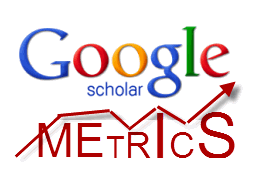
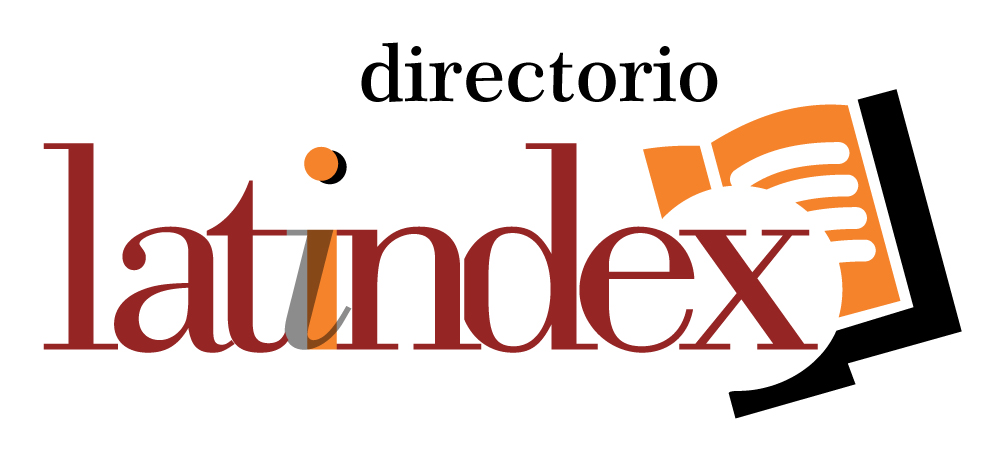
.png)
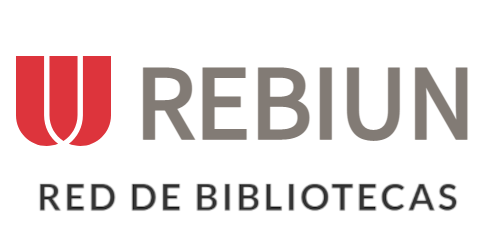







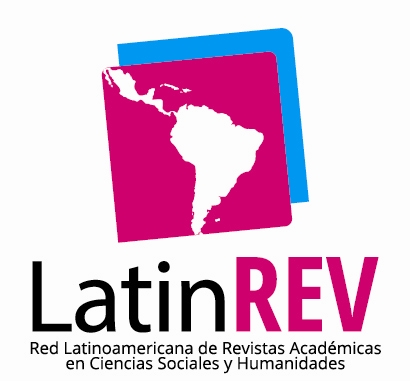

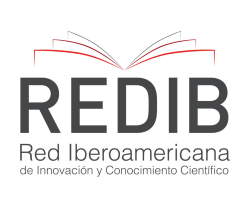









.png)
1.png)


